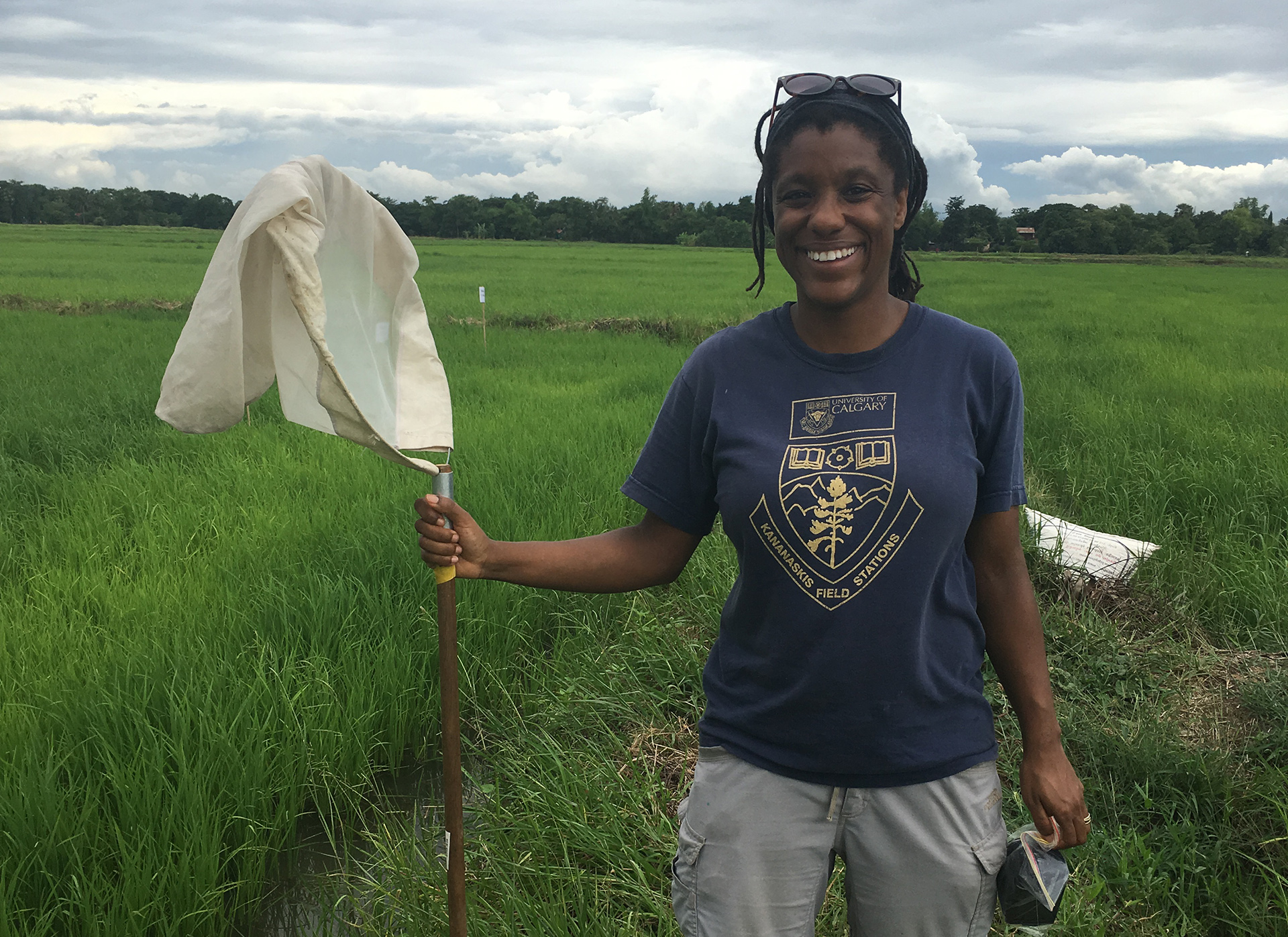
Tanya Latty (Fellow 2013–18)
How Swarm Intelligence in Ants Improves Urban Design
In her Branco Weiss project, Tanya Latty explored the resilience of natural living infrastructure systems by investigating what happens to networks of ants, bees, and slime molds if individual parts are lost or if transportation is disturbed in some other way. This project required an unusual degree of interdisciplinary work. One of the strengths of Tanya’s approach lies in her great gift for communicating across disciplines and establishing highly fruitful collaborations involving researchers in mathematics, computer science, forestry, and operations research.
Tanya’s ultimate goal at the beginning of her fellowship was to provide novel algorithms for managing human-built infrastructure systems. Little did she know that resilience to perturbations would be a theme preoccupying the whole world during a pandemic in 2020. Over a number of years, Tanya’s research team examined how ants design optimal transportation networks in the absence of centralized control. It turns out that ant colonies use two distinct strategies to deal with the competing design objectives of network construction. When trail networks are cheap to build and easy to reorganize, as is the case with Argentine ants, disruption is dealt with by re-routing agents and reorganizing the network. Such pruning processes are used to arrive at minimal-cost solutions – at the expense of robustness. Slime molds are even more impressive, since they lack a brain and yet are capable of solving complex problems involving assessing risk and food quality, adjusting search strategies, and balancing nutritional uptake.
In the end, Tanya identified surprisingly similar design principles across disparate biological and technological systems. The responses of these systems to changes in ecological conditions reveal commonalities which have made biologists think more deeply about how biological systems maintain resilience in the face of change. Biophysicists think that the same mechanisms of resilience are probably present in human immune systems.
The research during the fellowship gave Tanya the tools and insights needed to also study resilience in honeybee colonies. The ultimate aim was to identify at-risk colonies and develop interventions to prevent their collapse. Australia is home to at least 1,600 species of native bee, yet little is known about the ecology and behavior of the majority of species. Tanya’s research is tied to developing resilient pollination systems in both urban and agricultural regions. Currently, some crops in Australia are overly dependent on honeybees (which are not native to Australia) for much of their commercial pollination. This is not a resilient approach – it is necessary to develop agricultural pollination systems that make use of many pollinator species.
While developing techniques for ensuring resilient agro-ecosystems, Tanya also became involved in pest management research. By harnessing the natural pest control provided by predatory and parasitic insects, natural resilience increases, which in turn permits the use of insecticides to be reduced. This is especially important in lower-income countries where insecticide poisoning is a major problem.
Today, Tanya is an Associate Professor at the School of Life and Environmental Sciences at the University of Sydney and a member of the Sydney Institute of Agriculture. She has hosted a TV documentary on honey bees, one on slime mold, and frequently answers insect questions on the radio. With reference to the effect of the Branco Weiss Fellowship on her career, Tanya says: “I think my work has made biologists think more deeply about how biological systems solve problems and maintain resilience in the face of change. I have cultivated collaborators in civil engineering, computer science, and disaster management who, prior to meeting me, had not been interested in a bio-inspired approach. By nurturing and expanding these collaborations, I hope to have a lasting impact on infrastructure design.”
